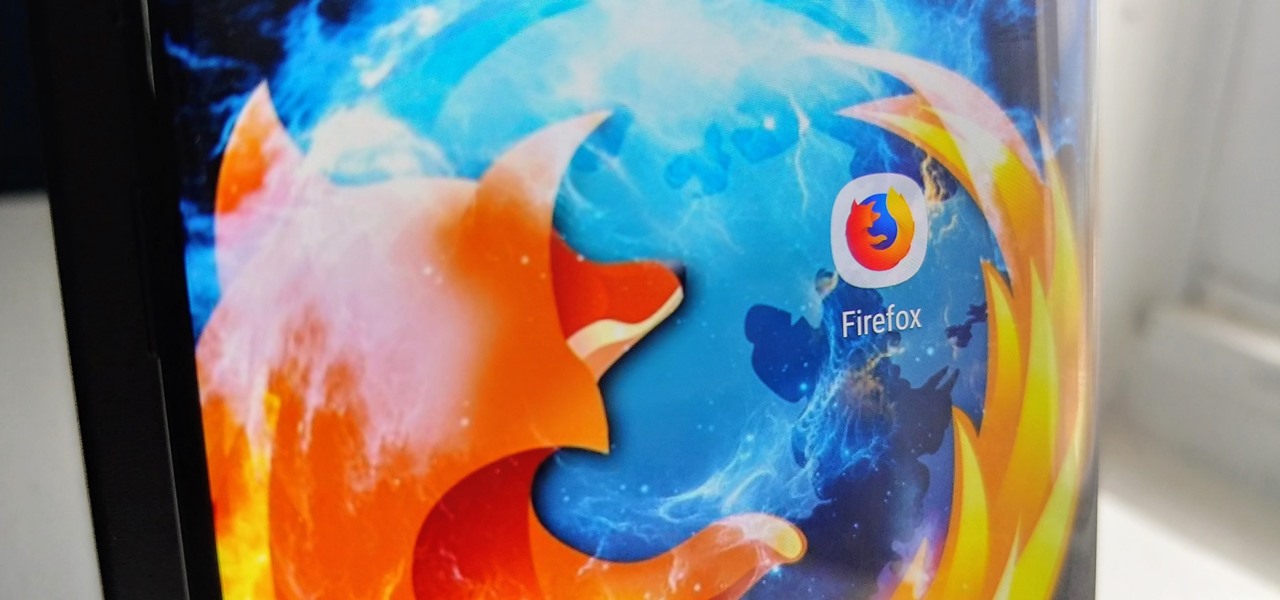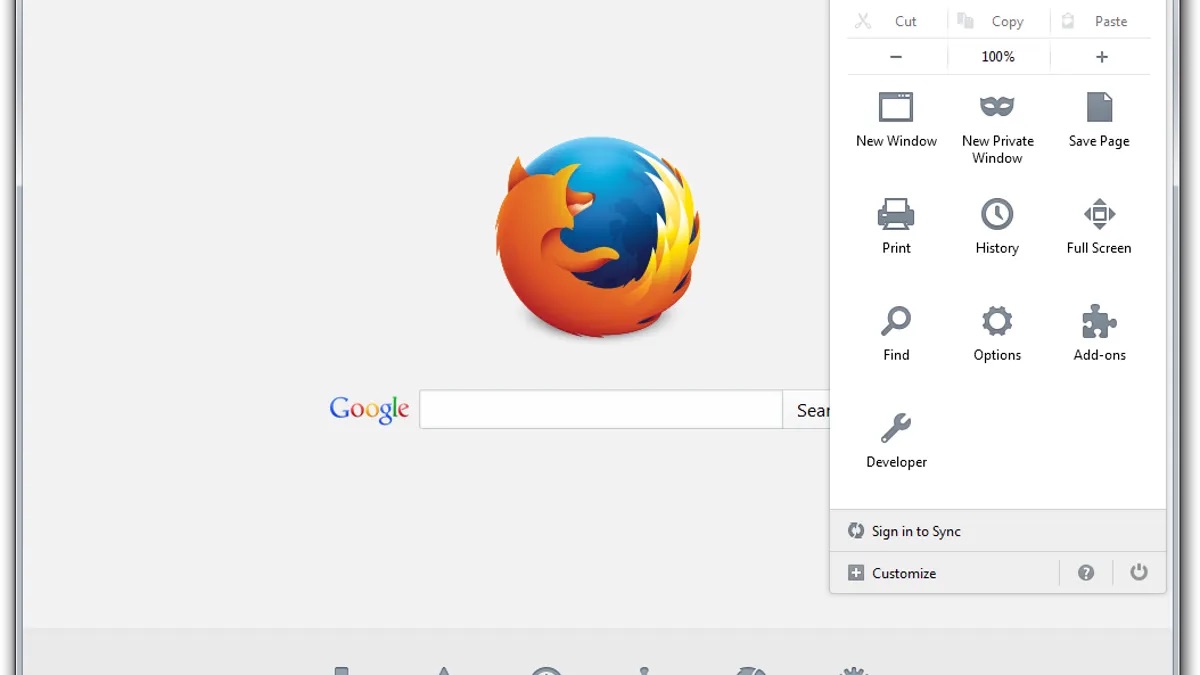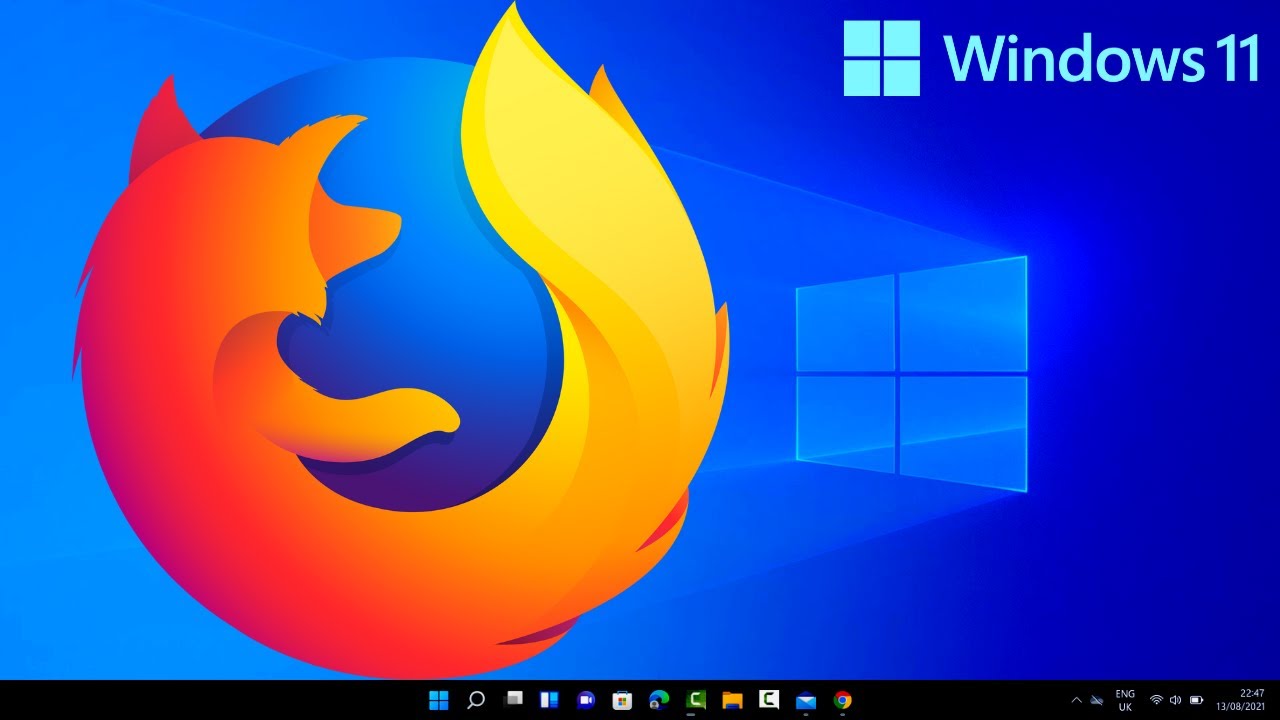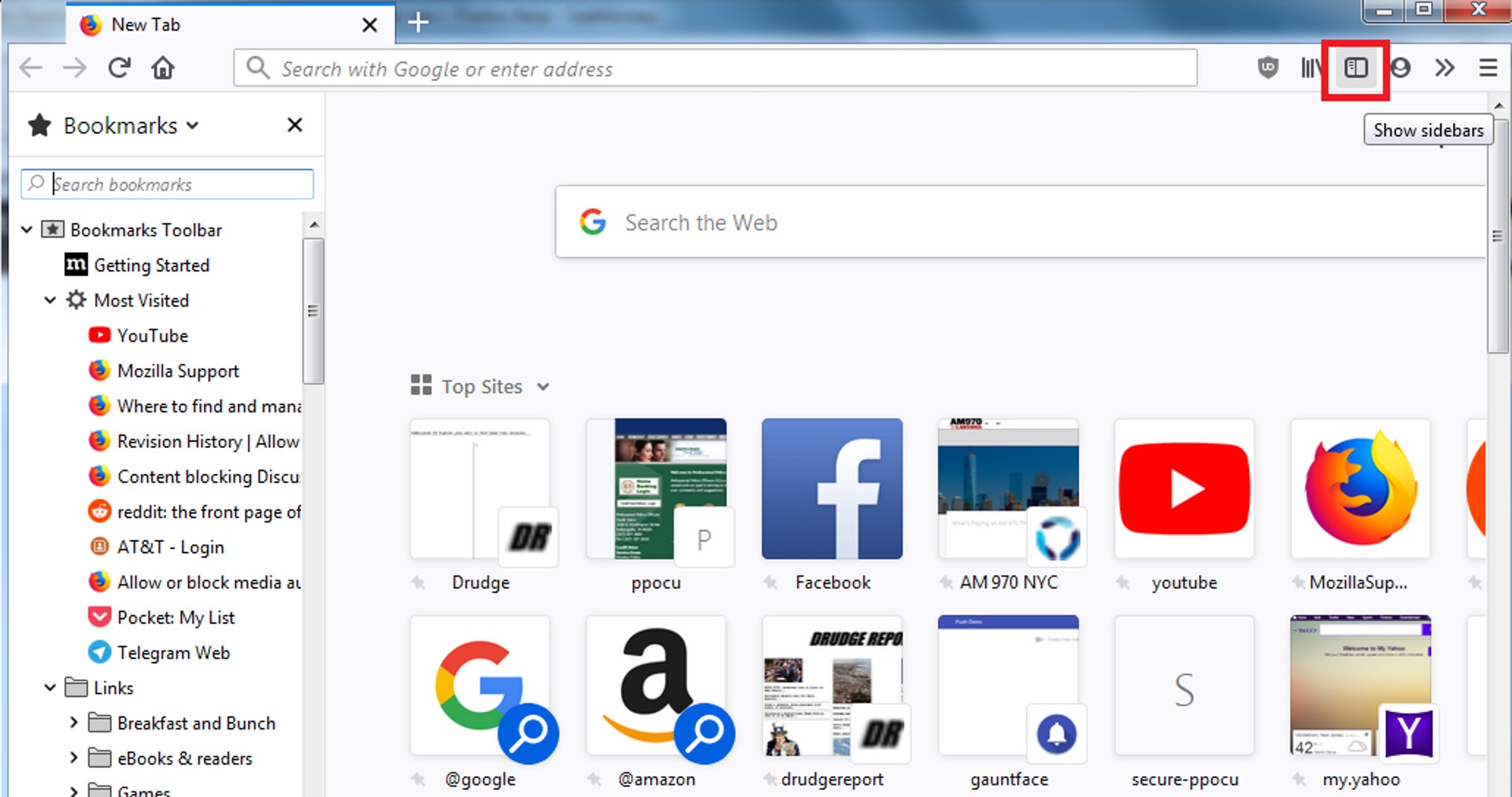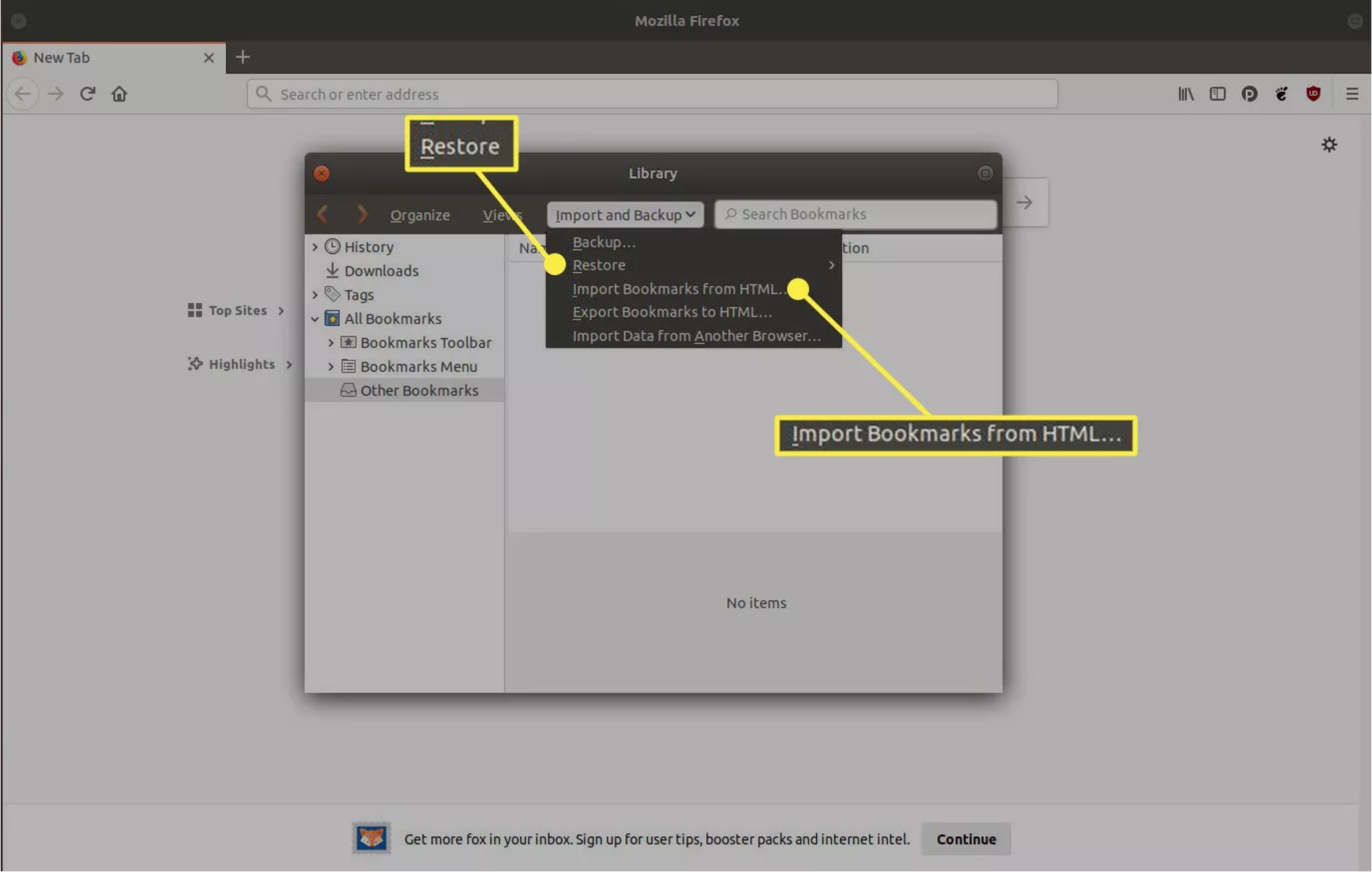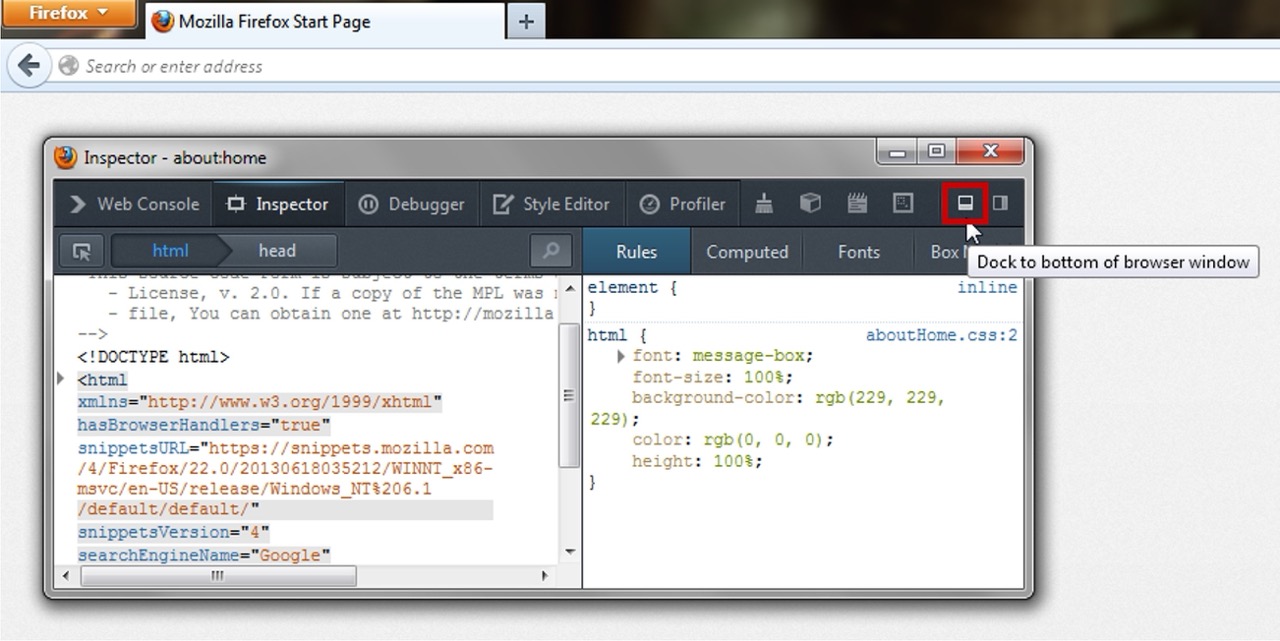Introduction
Creating a desktop shortcut for a website on Firefox can be a convenient way to access your favorite web pages with just a single click. Instead of launching the browser and typing in the URL each time, a desktop shortcut provides quick and direct access to the desired website, saving time and effort. This simple yet effective method can streamline your browsing experience and make accessing frequently visited websites a breeze.
In this article, we will guide you through the process of creating a desktop shortcut for a website using Firefox. Whether it's a news website, social media platform, or any other site you frequently visit, having a desktop shortcut can simplify your browsing routine. By following the steps outlined in this guide, you can customize your desktop with shortcuts to your preferred websites, making them easily accessible without the need to open the browser and type in the URLs manually.
With the ability to personalize your desktop with shortcuts to your most visited websites, you can streamline your online activities and enhance your overall browsing efficiency. Whether you're a casual user or a professional navigating various web platforms, creating desktop shortcuts in Firefox can be a valuable time-saving technique. This guide aims to simplify the process, allowing you to create and manage desktop shortcuts with ease, ultimately optimizing your browsing experience.
By the end of this tutorial, you will have the knowledge and skills to create desktop shortcuts for your favorite websites using Firefox, empowering you to tailor your desktop to your browsing habits and preferences. Let's dive into the step-by-step process and discover how to create Firefox desktop shortcuts effortlessly.
Step 1: Open Firefox
To begin the process of creating a desktop shortcut for a website using Firefox, the first step is to open the Firefox web browser on your computer. You can do this by locating the Firefox icon on your desktop or by searching for it in your computer's applications or programs menu.
Once you have located the Firefox icon, simply double-click on it to launch the browser. Alternatively, if Firefox is pinned to your taskbar, you can single-click on the icon to open the browser. As the browser opens, you will be greeted by the familiar Firefox interface, complete with the address bar, tabs, and various menu options.
If Firefox is set as your default browser, it may also open when you click on a web link from another application, such as an email or a document. In this case, you can proceed with the next steps to create a desktop shortcut for the desired website directly from the Firefox browser window.
Upon opening Firefox, take a moment to ensure that you are connected to the internet, as creating a desktop shortcut for a website requires access to the web. If you are not already connected to the internet, you can establish a connection by clicking on the network icon in your system tray or by accessing your computer's network settings.
Once you have successfully opened Firefox and confirmed your internet connection, you are ready to proceed to the next step in creating a desktop shortcut for your desired website. With the browser now active, you can move on to the next step in the process, which involves navigating to the website for which you wish to create a desktop shortcut.
Opening Firefox is the initial step in the process of creating a desktop shortcut for a website, setting the stage for the subsequent actions that will enable you to customize your desktop with convenient shortcuts to your favorite web pages. With Firefox up and running, you are now prepared to move on to the next step and continue the process of creating desktop shortcuts for your preferred websites.
Step 2: Navigate to the desired website
After successfully opening the Firefox web browser, the next crucial step in creating a desktop shortcut for a website is to navigate to the specific web page for which you intend to create the shortcut. This step involves entering the URL of the desired website into the address bar of the Firefox browser and loading the webpage to ensure that it is accessible and ready for the shortcut creation process.
To navigate to the desired website, you can simply click on the address bar at the top of the Firefox browser window. The address bar is typically located near the top of the browser interface and is where you can enter website addresses or URLs. Once you have clicked on the address bar, you can proceed to type in the URL of the website you wish to create a desktop shortcut for. For example, if you want to create a shortcut for a news website, a social media platform, an online shopping site, or any other web page, you can enter its URL in the address bar.
As you type the URL, Firefox may provide suggestions based on your browsing history or bookmarks, making it easier to access frequently visited websites. If the desired website appears in the suggestions, you can simply click on it to navigate directly to the webpage. Alternatively, if the website does not appear in the suggestions, you can continue typing the full URL and press "Enter" to load the webpage.
Upon pressing "Enter," Firefox will initiate the process of accessing the website by sending a request to the web server hosting the page. The server will then respond by sending the necessary data to your browser, allowing the webpage to load and become visible within the Firefox window. Depending on your internet connection speed and the complexity of the website, the loading process may take a few moments.
Once the webpage has fully loaded, you will be able to interact with its content, navigate through its links, and access its various features. It is important to ensure that the webpage is fully loaded and displayed correctly before proceeding to the next step of creating the desktop shortcut. This ensures that the shortcut accurately represents the desired website and provides seamless access to its content when clicked on from the desktop.
Navigating to the desired website is a pivotal step in the process of creating a desktop shortcut using Firefox. By entering the website's URL in the address bar and loading the webpage, you are setting the stage for the subsequent actions that will enable you to add a convenient shortcut to your desktop. With the webpage successfully loaded in the Firefox browser, you are now prepared to move on to the next step and continue the process of creating a desktop shortcut for your preferred website.
Step 3: Click on the three-dot menu
Once you have successfully navigated to the desired website in the Firefox browser, the next step in creating a desktop shortcut involves accessing the three-dot menu, which contains a range of options for customizing your browsing experience. The three-dot menu, also known as the "hamburger menu," is a common feature in modern web browsers, including Firefox, and is typically located in the upper-right corner of the browser window.
To access the three-dot menu, direct your attention to the top-right corner of the Firefox interface, where you will find the three-dot icon arranged vertically. This icon serves as a gateway to a variety of browser functions and settings, allowing you to perform tasks such as managing bookmarks, accessing browser options, and customizing your browsing environment.
Upon locating the three-dot icon, click on it to reveal a dropdown menu containing a selection of options and features. This action will open up a menu that provides access to various tools and functionalities, empowering you to personalize your browsing experience and perform specific actions within the browser.
Once the three-dot menu is displayed, take a moment to familiarize yourself with the available options and features. You will find a range of tools and functions that can enhance your browsing efficiency and enable you to tailor your Firefox experience to your preferences. From managing bookmarks and accessing browser settings to utilizing developer tools and customizing the browser interface, the three-dot menu offers a wealth of capabilities at your fingertips.
In the context of creating a desktop shortcut for a website, the three-dot menu plays a crucial role in facilitating the shortcut creation process. By clicking on the three-dot icon and accessing the menu, you will be able to navigate to the specific option that enables the addition of a desktop shortcut for the currently viewed webpage.
The three-dot menu serves as a gateway to a multitude of browser functions and features, empowering you to customize your browsing experience and access essential tools with ease. By clicking on the three-dot icon and exploring the menu, you can unlock a world of possibilities within the Firefox browser, including the ability to create desktop shortcuts for your favorite websites.
With the three-dot menu now accessible and ready for exploration, you are poised to move on to the next step in the process, which involves selecting the appropriate option to add the current webpage as a desktop shortcut. This pivotal action will bring you closer to the completion of the desktop shortcut creation process, allowing you to seamlessly integrate your preferred websites into your desktop environment for quick and convenient access.
Step 4: Select "Page" and then "Add to Desktop"
After accessing the three-dot menu in the Firefox browser, the next crucial step in creating a desktop shortcut for the currently viewed webpage involves navigating to the "Page" option within the menu and selecting the "Add to Desktop" feature. This essential action enables you to initiate the process of adding a desktop shortcut for the specific website, empowering you to customize your desktop with convenient access to your favorite web pages.
Upon clicking on the three-dot menu, you will be presented with a dropdown menu containing a variety of options and features designed to enhance your browsing experience. Among the available options, you will find the "Page" category, which encompasses tools and functionalities related to the currently viewed webpage. By hovering your cursor over the "Page" option, a submenu will appear, showcasing a selection of actions that can be performed in relation to the webpage.
Within the "Page" submenu, you will encounter the "Add to Desktop" feature, which serves as the gateway to creating a desktop shortcut for the currently viewed webpage. This powerful functionality allows you to seamlessly integrate the webpage into your desktop environment, providing quick and direct access to its content with just a single click.
To proceed with adding the webpage as a desktop shortcut, simply navigate to the "Page" option within the three-dot menu and hover your cursor over it to reveal the submenu. From the submenu, select the "Add to Desktop" feature by clicking on it, initiating the process of creating a desktop shortcut for the specific webpage.
Upon selecting "Add to Desktop," Firefox will prompt you to customize the shortcut by providing a name for the shortcut. This step allows you to personalize the desktop shortcut, giving it a distinct and recognizable name that reflects the content or purpose of the webpage. After entering the desired name for the shortcut, you can proceed to click on the "Add" button, finalizing the creation of the desktop shortcut for the webpage.
By following these intuitive steps and leveraging the "Page" and "Add to Desktop" features within the Firefox browser, you can seamlessly integrate your favorite websites into your desktop environment, streamlining your browsing experience and enhancing your overall efficiency. With the desktop shortcut now created, you can conveniently access the webpage with a single click, eliminating the need to open the browser and manually navigate to the website each time.
The process of selecting "Page" and then "Add to Desktop" represents a pivotal stage in the creation of desktop shortcuts using Firefox, empowering you to personalize your desktop with convenient access to your preferred web pages. By leveraging these powerful features, you can optimize your browsing routine and tailor your desktop environment to align with your browsing habits and preferences.
Step 5: Name the shortcut and click "Add"
After selecting the "Add to Desktop" option for the desired webpage in Firefox, the next crucial step involves naming the shortcut and finalizing the process by clicking the "Add" button. This step allows you to personalize the desktop shortcut, giving it a distinct and recognizable name that reflects the content or purpose of the webpage. By customizing the name of the shortcut, you can easily identify and differentiate it from other desktop icons, ensuring seamless access to the specific webpage with just a single click.
Upon selecting "Add to Desktop," Firefox will prompt you to provide a name for the shortcut. This prompt typically appears as a dialog box or a pop-up window within the browser interface, allowing you to input the desired name for the desktop shortcut. The name you choose for the shortcut should be descriptive and indicative of the webpage it represents, enabling you to quickly identify and access the content it links to.
When naming the shortcut, consider using clear and concise language that accurately reflects the nature of the webpage. For example, if the shortcut is for a news website, you can name it "News Hub" or "Daily Headlines" to signify its purpose. Similarly, if the shortcut represents a social media platform, you can use the platform's name or a related identifier as the shortcut name, such as "Social Connect" or "Community Hub."
After entering the desired name for the shortcut, you can proceed to click on the "Add" button, finalizing the creation of the desktop shortcut for the webpage. By clicking "Add," you confirm the customization of the shortcut name and officially integrate the shortcut into your desktop environment. This action solidifies the presence of the shortcut on your desktop, making it readily accessible for future use.
By naming the shortcut and clicking "Add," you complete the process of creating a personalized desktop shortcut for the specific webpage, enhancing your browsing efficiency and providing convenient access to your favorite websites. With the desktop shortcut now in place, you can effortlessly launch the webpage with a single click, eliminating the need to manually open the browser and navigate to the website each time.
In summary, the final step of naming the shortcut and clicking "Add" represents the culmination of the desktop shortcut creation process, allowing you to tailor your desktop environment to align with your browsing habits and preferences. This intuitive customization empowers you to optimize your browsing routine and streamline your access to frequently visited web pages, ultimately enhancing your overall browsing experience.







